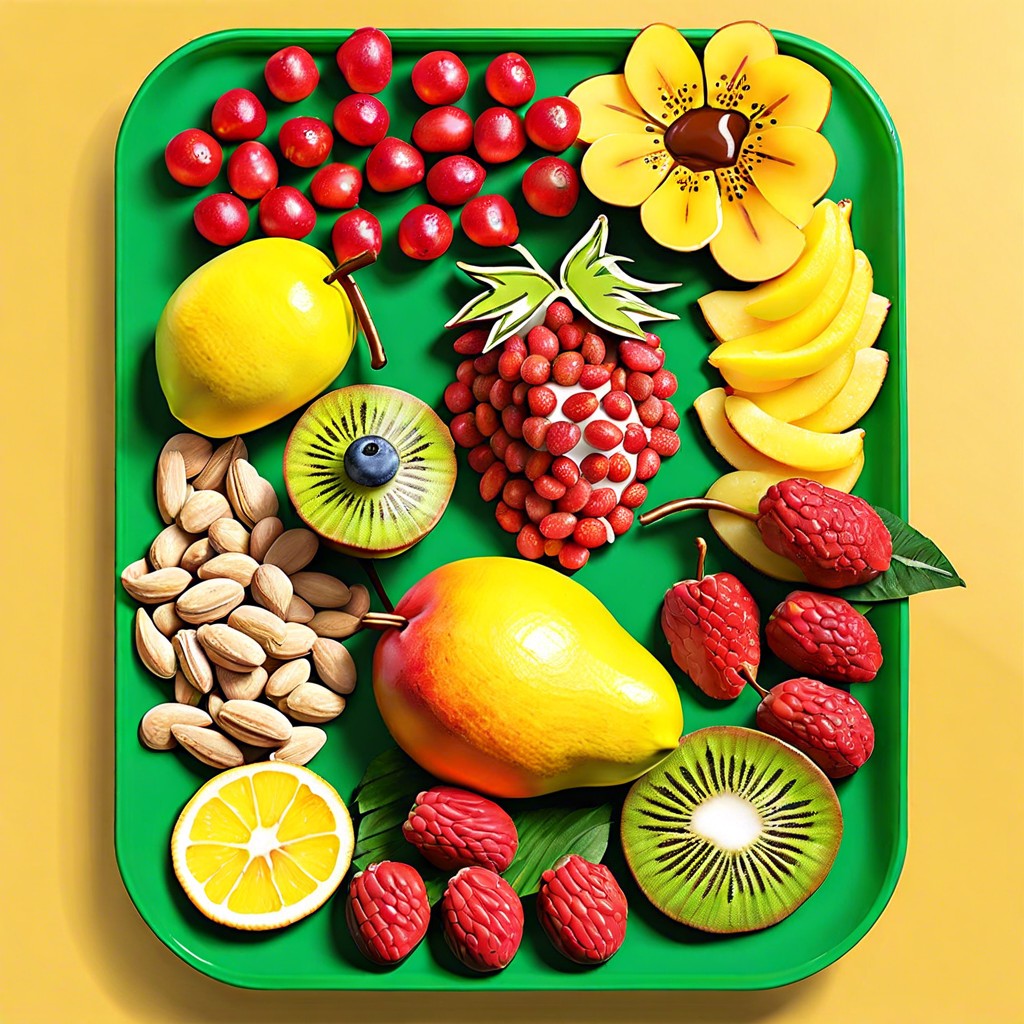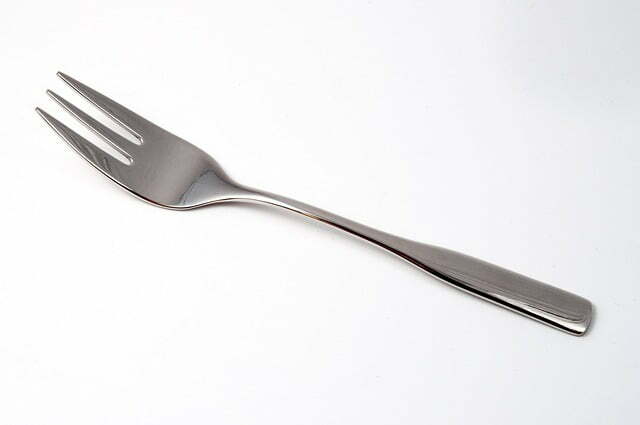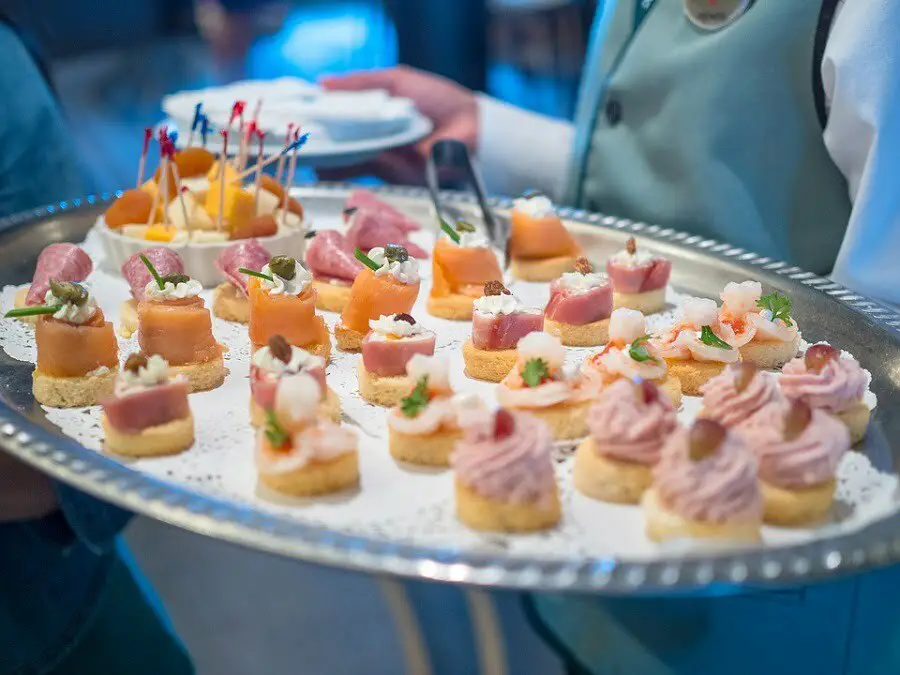Discover the art of assembling a visually stunning and delicious grazing platter that will impress your guests and elevate any occasion.
Grazing platters are the perfect way to impress your guests at any gathering. They’re not only visually appealing but also offer a great variety of flavors and textures.
However, setting up a grazing platter can seem like an overwhelming task for many people. But fear not! In this article, we’ll guide you through the process of creating the perfect grazing platter that will leave your guests impressed and satisfied.
So, let’s dive in!
Choosing the Right Platter
When it comes to creating a grazing platter, choosing the right platter is crucial. The size and shape of your platter will determine how much food you can fit on it and how visually appealing your final product will be.
A large wooden board or slate tile works well for larger gatherings, while smaller ceramic plates are perfect for more intimate settings.
Consider the color of your chosen plate as well – a neutral-colored plate such as white or beige allows the colors of the food to pop, while darker plates provide an elegant backdrop that complements richly colored foods like charcuterie.
Another important factor when selecting a grazing platter is its durability. Make sure that whatever material you choose can withstand being loaded up with heavy items without breaking or cracking.
Ultimately, choosing the right grazing platter depends on personal preference and practicality.
Selecting Variety of Cheeses
You want to offer a range of flavors and textures that will appeal to different tastes. Start by choosing at least three types of cheese: one soft, one hard, and one blue cheese.
For the soft cheese option, consider brie or camembert. These creamy cheeses pair well with fruits like grapes or figs.
For the hard cheese option, try cheddar or gouda. These aged cheeses have a sharper flavor that pairs well with cured meats like salami.
Blue Cheese is an acquired taste but can be paired perfectly with honeycomb and nuts on your grazing platter.
Don’t be afraid to experiment with other types of cheese as well! Goat’s milk feta adds a tangy flavor while smoked gouda offers a smoky taste profile.
Incorporating Charcuterie
It adds depth and variety to the selection of meats, cheeses, and other accompaniments. When selecting charcuterie for your platter, it’s important to consider the flavors that will complement each other.
Some popular options include prosciutto, salami, chorizo or soppressata. These cured meats come in different textures and flavors that can be paired with various types of cheese or fruits.
To add an extra layer of flavor to your charcuterie board you can also incorporate pâté or terrine which are made from ground meat mixed with spices and herbs.
When arranging your charcuterie on the platter make sure they’re sliced thinly so guests can easily pick them up without having to struggle with cutting through thick pieces. You may also want to fold some slices into interesting shapes like rosettes for added visual appeal.
Crackers and Bread Options
The key is to choose a variety of options that complement the flavors of your cheeses, meats, and dips.
For crackers, consider selecting different shapes and textures such as water crackers or rice cakes for a crispy texture or whole-grain options like wheat thins or multigrain crisps. You can also add some flavor by including herb-infused varieties like rosemary flatbread.
Bread is another great option to include on your grazing platter. Sliced baguette pairs well with soft cheeses while sourdough adds depth when paired with stronger-flavored cheese selections.
For something more unique try adding pita chips or naan bread which pair perfectly with hummus dips.
Remember not to overcrowd your board; instead arrange them in small piles around the edges leaving enough space for other ingredients in between them.
Adding Dips and Spreads
They can be used as a dip for crackers, bread, or vegetables or spread on top of cheese or meat. When selecting dips and spreads, it’s important to consider the flavors that will complement the other ingredients on your platter.
Hummus is always a crowd-pleaser with its creamy texture and savory taste. You can also try adding some tzatziki sauce for an extra tangy kick.
If you’re looking for something sweet, fruit jams like fig jam pair well with soft cheeses like brie.
For those who love spicy food, hot pepper jelly is an excellent choice that pairs well with sharp cheddar cheese. Guacamole is another popular option that goes perfectly with tortilla chips or veggies.
When placing dips on your grazing board make sure they are in small bowls so they don’t mix up with other ingredients creating unwanted flavors.
Including Fruits and Vegetables
They also provide a healthy balance to the rich flavors of cheese and charcuterie. When selecting fruits for your platter, choose seasonal options such as berries in summer or pomegranates in winter.
For vegetables, opt for colorful varieties like cherry tomatoes or radishes.
To make your grazing platter more visually appealing and easy to eat, cut the fruits into bite-sized pieces or leave them whole if they’re small enough. Vegetables can be sliced thinly or left whole with their stems intact for an added rustic touch.
Incorporating dips like hummus or tzatziki is also an excellent way to enhance the flavor of raw veggies while adding another layer of texture to your grazing board.
Nuts and Extras
Nuts like almonds, cashews, pistachios, and walnuts are great options that can be roasted or salted for added flavor. You can also include dried fruits like apricots or cranberries for a sweet touch.
Extras such as pickled vegetables (like cornichons), marinated artichokes, sun-dried tomatoes or roasted peppers will add an extra layer of flavor to your platter. These items not only taste delicious but also look beautiful on the board.
When selecting nuts and extras for your grazing platter make sure you consider any dietary restrictions of your guests such as nut allergies. It’s always a good idea to label each item so that everyone knows what they’re eating.
Olives and Pickles
They add a salty and tangy flavor that complements the other items on the platter. When selecting olives, consider choosing different varieties such as Kalamata, green, or black olives stuffed with feta cheese or garlic to provide your guests with an array of flavors to choose from.
For pickles, you can opt for classic dill pickles or try something more unique like spicy pickle spears or bread and butter chips. You can also include other types of pickled vegetables such as carrots, cauliflower florets, cherry peppers for added variety.
When arranging these items on your grazing platter make sure they are spread out evenly throughout the board so that each guest has easy access to them without having to reach over other foods. Additionally providing small bowls for pits is always appreciated by guests who don’t want their plates cluttered with olive pits.
Sweet Treats Selection
They add a touch of sweetness and balance out the savory flavors. When selecting sweet treats, it’s important to consider the overall theme and color scheme of your platter.
Here are some ideas for sweet treats that will complement your grazing platter:
- Chocolate: Dark chocolate or chocolate-covered nuts make an excellent addition to any grazing board.
- Fresh fruit: Berries, grapes, figs, and sliced apples or pears can add both color and flavor.
- Dried fruit: Apricots, dates or figs can be used as natural sweets with no added sugar.
- Candies: Gummies in different shapes like bears or worms bring fun into the mix while adding sweetness
- Cookies & Biscuits: Shortbread cookies, ginger snaps, butter biscuits etc.
Remember that moderation is key when it comes to sweet treats on a grazing board.
Arrangement and Styling Tips
The key is to create a visually appealing display that will make your guests want to dig in right away. Start by placing larger items such as cheeses and meats first, then fill in the gaps with smaller items like fruits, nuts, crackers or bread.
To add some height and dimension to your grazing platter, try stacking cheese slices or rolling up charcuterie slices into little bundles. You can also use small bowls for dips or olives which will help keep everything organized.
When it comes to styling tips for grazing platters there are no hard rules but here are some suggestions:
- Create color contrast by using different colored fruits and vegetables
- Use fresh herbs like rosemary sprigs as garnish
- Add edible flowers for an extra pop of color
- Play around with shapes – cut cheese into triangles instead of squares
Preparing and Cutting Ingredients
The way you cut and arrange your ingredients can make a big difference in the overall presentation of your platter. Here are some tips to keep in mind:
- Cut cheese into bite-sized pieces or wedges.
- Slice cured meats thinly so they’re easy to pick up with fingers.
- Cut fruits and vegetables into small, manageable pieces.
- Arrange items like nuts, olives, and pickles in small piles around the board.
When cutting ingredients for a grazing platter, aim for consistency in size so that everything looks neat on the board.
Remember that not all cheeses or meats need to be sliced uniformly; some may look better when presented as whole blocks or chunks.
Filling Empty Spaces
This is where you can get creative and add some finishing touches to your grazing platter. You can use small bowls or ramekins to hold dips, olives, nuts or other small items that may not fit well on the main board.
Another great way of filling up space is by adding fresh herbs like rosemary sprigs or thyme leaves around the edges of the board. Not only do they look beautiful but also add a subtle aroma and flavor.
You can also use fruits like grapes, berries or figs as fillers between larger items such as cheeses and meats. They will not only make your grazing platter look fuller but also provide a refreshing burst of sweetness.
Remember that while it’s important to fill in empty spaces with additional food items, don’t overcrowd your board either! Leave enough room for guests to easily pick up their favorite bites without knocking over anything else.
Providing Utensils and Serving Tools
This will ensure that they can easily access all the delicious treats on offer without any hassle. Depending on what you’ve included in your platter, some of the necessary utensils may include cheese knives, small forks or tongs for picking up fruits or vegetables, spoons for dips and spreads, toothpicks or skewers to make bite-sized portions of charcuterie.
It’s also important to consider how many people will be sharing the grazing platter when selecting serving tools. If it is a large gathering with several guests expected at once then having multiple sets of utensils would be ideal so everyone can enjoy their food comfortably.
In addition to providing enough cutlery and serveware pieces; don’t forget about napkins! They are an essential part of any grazing table setup as they help keep hands clean while enjoying all those tasty bites.
Addressing Dietary Restrictions
Whether they are vegetarian, vegan, gluten-free or have any other food allergies or intolerances, you want everyone to feel included and satisfied with the options available on your grazing platter.
To address these concerns effectively and ensure that all guests can enjoy the spread without worry or discomfort, make sure you include a variety of options that cater specifically for their needs. For example:
- Vegetarian: Offer plenty of fresh fruits and vegetables along with cheese varieties like brie and goat cheese.
- Vegan: Include plant-based dips such as hummus or guacamole alongside nuts like almonds and cashews.
- Gluten-Free: Choose crackers made from rice flour instead of wheat flour.
- By taking into account different dietary requirements when planning your grazing platter menu will not only show consideration for all attendees but also add more diversity in flavors which is always appreciated by everyone!
Cheese Pairing Ideas
Pairing different types of cheeses with complementary flavors and textures can elevate your grazing platter to new heights. Here are some cheese pairing ideas that you can incorporate into your next grazing platter:
- Brie and fig jam: The creamy texture of brie pairs perfectly with the sweetness of fig jam.
- Blue cheese and honey: The sharpness of blue cheese is balanced out by the sweetness of honey.
- Cheddar and apple slices: Sharp cheddar goes well with crisp apple slices for a classic combination.
- Goat’s milk cheese and roasted red peppers: Tangy goat’s milk cheese complements smoky roasted red peppers for a delicious flavor contrast.
These are just some examples, but there are countless other combinations you could try based on personal preference.
Charcuterie Pairing Ideas
When selecting charcuterie for your platter, consider pairing them with complementary flavors that will elevate their taste. For instance, prosciutto pairs well with sweet fruits like melons or figs while salami goes perfectly well with tangy pickles or olives.
Another great way of pairing charcuterie is by considering the texture of each meat type. For example, if you have a soft cheese on your board like brie or camembert, pair it up with crispy bacon bits for an added crunch.
When choosing wine to serve alongside your grazing platter featuring charcuterie meats such as salami and prosciutto; opt for red wines such as Pinot Noir or Chianti which complement these meats’ rich flavor profiles beautifully.
Creating Balance and Color
You want to make sure that you have a good mix of flavors and textures on your platter. This means including different types of cheeses, meats, fruits, vegetables, nuts and dips.
But it’s not just about the variety of ingredients; you also need to consider the color scheme when assembling your platter. A visually appealing grazing board should have pops of vibrant colors throughout.
To achieve this balance in color and texture on your grazing board start by selecting colorful fruits like grapes or berries as well as bright veggies such as cherry tomatoes or carrots sticks for example. Then add some contrasting elements like dark olives or pickles which will help break up any monotony in appearance while adding flavor diversity too!
Remember that presentation is everything! So take time arranging each ingredient carefully so they complement one another aesthetically while still being easily accessible for guests’ enjoyment.
Themed Grazing Platter Ideas
Whether you’re hosting a birthday party, bridal shower, or game night with friends, there’s always room for creativity when it comes to themed grazing platters.
For example, if you’re throwing a beach-themed party in the summer months, consider incorporating seafood options like shrimp cocktail or smoked salmon. You can also include tropical fruits such as pineapple and mangoes along with coconut flakes for added flavor.
If you’re planning on having a movie night at home with friends or family members then why not create a popcorn bar? Fill your platter up with different flavors of popcorns like caramel corns and cheddar cheese flavored ones. Add some candies that go well together like M&Ms and Reese’s Pieces.
Another idea is creating an Italian-inspired grazing board filled with cured meats such as prosciutto di Parma alongside fresh mozzarella balls drizzled in olive oil & balsamic vinegar glaze served alongside breadsticks wrapped in prosciutto ham slices.
Seasonal Platter Suggestions
Not only does it add a touch of freshness and color, but also allows you to experiment with new flavors and textures. For instance, during summer months, you can include juicy watermelon slices or fresh berries in your platter for a refreshing taste.
In fall season, apples and pears make great additions while roasted nuts bring warmth into the mix.
During winter months when citrus fruits are at their peak flavor-wise; oranges or grapefruits segments will brighten up any grazing board while dried fruits like figs or apricots provide an extra layer of sweetness that pairs well with cheese.
In springtime when everything is blooming again after winter hibernation; radishes sliced thinly on top of crackers give an added crunchiness that complements soft cheeses perfectly. Fresh herbs such as mint leaves also add fragrance which enhances the overall experience.
Budget-Friendly Options
There are plenty of budget-friendly options that can still impress your guests. One way to save money is by selecting cheaper cuts of meat, such as ham or salami, instead of pricier charcuterie like prosciutto or bresaola.
You can also opt for affordable cheeses like cheddar and gouda instead of more expensive varieties.
Another cost-saving tip is to incorporate seasonal fruits and vegetables into your platter since they tend to be less expensive when in season. You can use crackers and bread from discount stores rather than specialty shops.
Don’t forget about presentation! A well-arranged grazing platter will look impressive regardless of the ingredients used. Use different textures and colors on your board for an eye-catching display that will make even simple ingredients look gourmet.
With these tips in mind, you’ll be able to create a beautiful grazing platter without breaking the bank!
FAQ
What do you put on the bottom of a grazing platter?
On the bottom of a grazing platter, place items such as dips, relishes, fruit paste, fresh fruit or vegetable pieces, dried fruit, cured deli meats, and olives, ensuring a variety of easy-to-make options like Whipped Feta, Avocado Cilantro Dip, or Hummus.
How early can you set up a grazing table?
You can set up a grazing table as early as 30 minutes before guests arrive, placing dippers, veggies, fruits, nuts, and desserts first, and adding meats and cheeses right before eating, as they should sit out for a maximum of 2 hours.
What are the essentials for a well-balanced grazing platter?
A well-balanced grazing platter consists of a variety of cheeses, fresh fruits, vegetables, meats, crackers, and spreads to cater to diverse taste preferences and dietary needs.
How can one accommodate dietary restrictions and preferences on a grazing table?
To accommodate dietary restrictions and preferences on a grazing table, one can provide a diverse range of food options, keeping allergens and dietary requirements in mind, and label each item clearly for guests.
What are some creative ways to display and arrange food items on a grazing platter?
Some creative ways to display and arrange food items on a grazing platter include using various heights, incorporating a mix of textures and colors, and grouping similar food items together.




